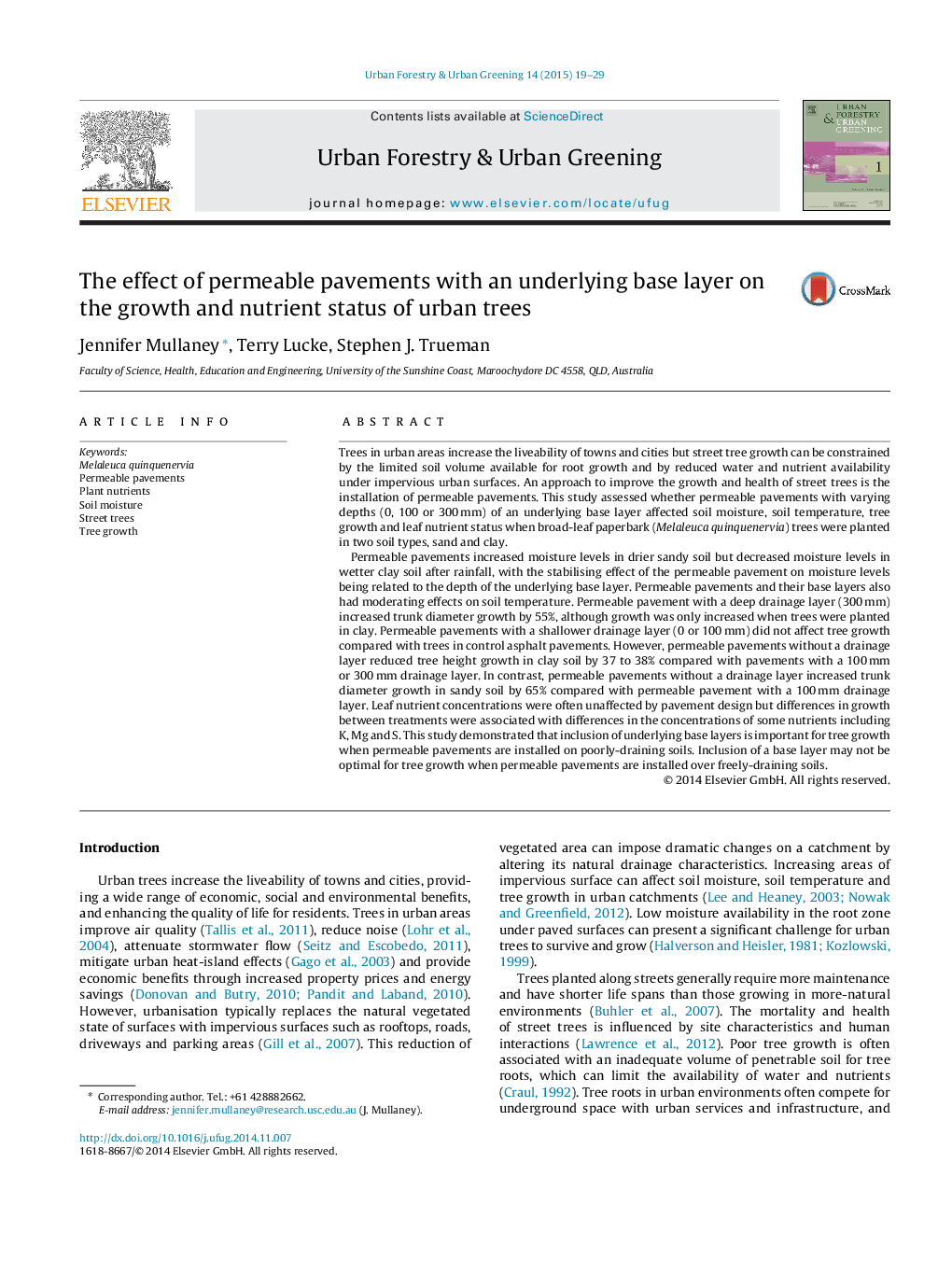| Article ID | Journal | Published Year | Pages | File Type |
|---|---|---|---|---|
| 10252228 | Urban Forestry & Urban Greening | 2015 | 11 Pages |
Abstract
Permeable pavements increased moisture levels in drier sandy soil but decreased moisture levels in wetter clay soil after rainfall, with the stabilising effect of the permeable pavement on moisture levels being related to the depth of the underlying base layer. Permeable pavements and their base layers also had moderating effects on soil temperature. Permeable pavement with a deep drainage layer (300Â mm) increased trunk diameter growth by 55%, although growth was only increased when trees were planted in clay. Permeable pavements with a shallower drainage layer (0 or 100Â mm) did not affect tree growth compared with trees in control asphalt pavements. However, permeable pavements without a drainage layer reduced tree height growth in clay soil by 37 to 38% compared with pavements with a 100Â mm or 300Â mm drainage layer. In contrast, permeable pavements without a drainage layer increased trunk diameter growth in sandy soil by 65% compared with permeable pavement with a 100Â mm drainage layer. Leaf nutrient concentrations were often unaffected by pavement design but differences in growth between treatments were associated with differences in the concentrations of some nutrients including K, Mg and S. This study demonstrated that inclusion of underlying base layers is important for tree growth when permeable pavements are installed on poorly-draining soils. Inclusion of a base layer may not be optimal for tree growth when permeable pavements are installed over freely-draining soils.
Keywords
Related Topics
Life Sciences
Agricultural and Biological Sciences
Forestry
Authors
Jennifer Mullaney, Terry Lucke, Stephen J. Trueman,
